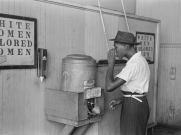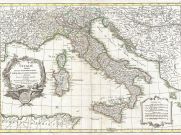Listen to academics long enough and you’ll believe (or at least be convinced they believe) that “diversity” has become the Windex of American higher education. (Toula Portakalos in My Big Fat Greek Wedding: “[narrating] My dad believed in two things: That Greeks should educate non Greeks about being Greek and every ailment from psoriasis to poison ivy can be cured with Windex.”)
“What Spurs Students to Stay in College and Learn?” the headline of an article in the Chronicle of Higher Education asks, and answers: “Good Teaching Practices and Diversity.” According to the Patrick T. Terenzini, distinguished professor of higher education at Pennsylvania State University, and Ernest T. Pascarella, a co-director of the Center for Research on Undergraduate Education at the University of Iowa, “Good teaching and exposure to students from diverse backgrounds are some of the strongest predictors of whether freshmen return for a second year of college and improve their critical thinking skills.”
“Good teaching,” the article reports,
was not defined by test results. Instead, its attributes were identified on a nine-item scale, which included student appraisals of how well the teacher organized material, used class time, explained directions, and reviewed the subject matter.
It’s not clear from the article whether those organizational skills were one or four of the nine points, but let’s move on to “diversity,” which was also measured on a nine-point scale.
Exposure to students of diverse backgrounds was measured on a nine-point “interactional diversity scale,” which asked students whether they made friends with a person of a different race, attended a diversity workshop, or interacted with others with different religious or political views, among other measures.
The article did not report how much more likely high scorers on the “interactional diversity scale” were to stay in school than the low scorers.













